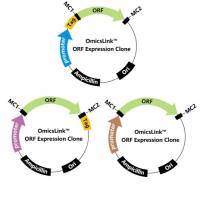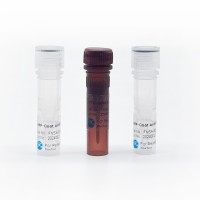Whole-Mount Fluorescence In Situ Hybridization to Chromosomes of Embryos
互联网
516
Whole-mount fluorescence in situ hybridization (FISH) to chromosomes of Drosophila embryos is used to pinpoint the position of a chromosomal segment of interest, specified by the DNA probe(s), within a “preserved” three-dimensional nuclear structure. This technique has been used to (1) visualize the relative positions of homologous loci during the onset of somatic chromosome pairing (1 ,2 ), (2) establish whether separation of sister chromatids had occurred in mutants arrested at the metaphase/anaphase transition (3 –5 ), (3) karyotype zygotes (6 ), and (4) ascertain the ploidy of nuclei of a checkpoint mutant (7 ). The basic embryo-FISH technique can be combined with antibody staining to permit simultaneous detection of both a hybridized DNA probe and a specific subcellular structure, such as the nuclear envelope, permitting spatial relationships to be defined (8 ,9 ). Protocols for both techniques are included in this chapter.








